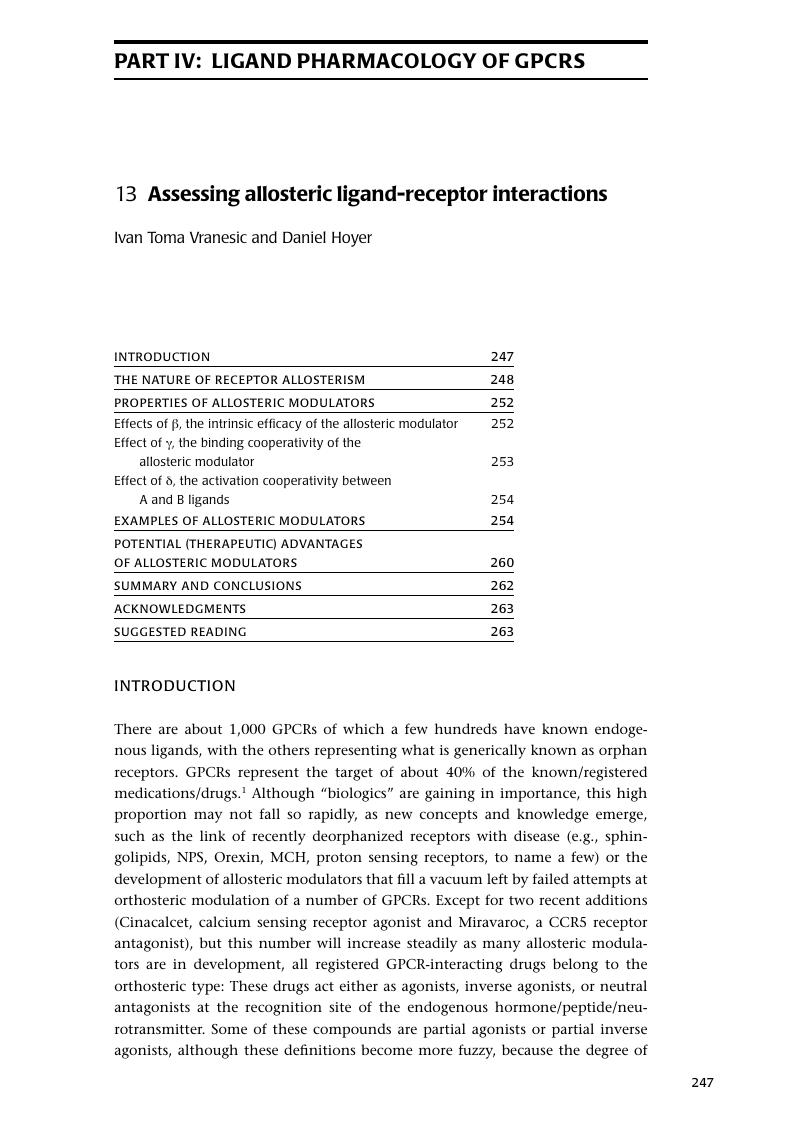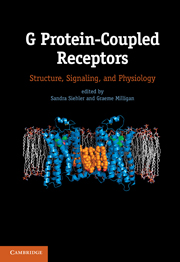Book contents
- Frontmatter
- Contents
- List of Figures
- List of Tables
- List of Contributors
- Introduction
- PART I ADVANCES IN GPCR PROTEIN RESEARCH
- PART II OLIGOMERIZATION OF GPCRS
- PART III GPCR SIGNALING FEATURES
- PART IV LIGAND PHARMACOLOGY OF GPCRS
- 13 Assessing allosteric ligand-receptor interactions
- 14 7TM receptor functional selectivity
- PART V PHYSIOLOGICAL FUNCTIONS AND DRUG TARGETING OF GPCRS
- Index
- References
13 - Assessing allosteric ligand-receptor interactions
from PART IV - LIGAND PHARMACOLOGY OF GPCRS
Published online by Cambridge University Press: 05 June 2012
- Frontmatter
- Contents
- List of Figures
- List of Tables
- List of Contributors
- Introduction
- PART I ADVANCES IN GPCR PROTEIN RESEARCH
- PART II OLIGOMERIZATION OF GPCRS
- PART III GPCR SIGNALING FEATURES
- PART IV LIGAND PHARMACOLOGY OF GPCRS
- 13 Assessing allosteric ligand-receptor interactions
- 14 7TM receptor functional selectivity
- PART V PHYSIOLOGICAL FUNCTIONS AND DRUG TARGETING OF GPCRS
- Index
- References
Summary

- Type
- Chapter
- Information
- G Protein-Coupled ReceptorsStructure, Signaling, and Physiology, pp. 247 - 269Publisher: Cambridge University PressPrint publication year: 2010



